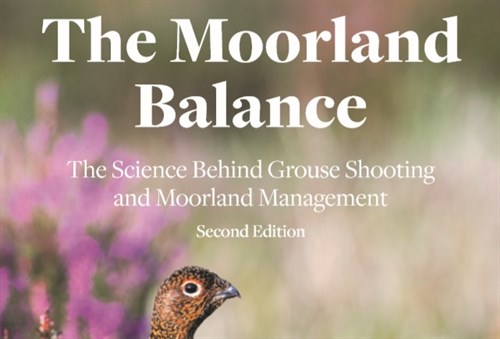Key points
- It is important to be able to study the diet of birds of prey.
- Methods of assessing raptor diet vary, and different methods can give different results.
- As a proportion of total diet, small mammals tend to be under-estimated and birds over-estimated by indirect methods such as looking at pellets and prey remains.
- Combining more than one method may help to reduce some of these biases.
Background
 Common buzzards are the most common bird of prey in Britain. They eat a wide variety of prey, including small mammals such as voles, rabbits/hares, insects, and smaller birds. It is important for conservation, as well as for ecological studies of the birds themselves, to have a good understanding of their diet. This paper looks at methods of studying raptor diet.
Common buzzards are the most common bird of prey in Britain. They eat a wide variety of prey, including small mammals such as voles, rabbits/hares, insects, and smaller birds. It is important for conservation, as well as for ecological studies of the birds themselves, to have a good understanding of their diet. This paper looks at methods of studying raptor diet.
There are two broad approaches to assessing the diet of birds of prey. Firstly, direct methods involve seeing first-hand what the birds eat. This can be done by tracking the birds, watching the birds from hides, or using cameras and videos. The second approach uses indirect methods, which involves looking at prey remains, pellets (indigestible food, such as feathers and bones, that birds of prey regurgitate each day) or droppings to find out what the birds were eating.
A best estimate of raptor diet can be found using direct methods. Some studies use indirect methods because of the time or financial costs associated with direct methods. However, indirect methods also give the scientists an opportunity to collect more samples and are less disturbing for the animals.
In this study, the scientists compared one direct method and two indirect methods of assessing buzzard diet.
What they did
This study took place between 2011 and 2013 on Langholm Moor in southwestern Scotland.
To give an idea of what food was available for buzzards in the area, surveys of voles and red grouse were conducted each March, whilst rabbits, hares and red grouse were counted in June.
In February or March each year, the scientists searched for buzzard nests in forests, crags and wooded areas. Overall 58 buzzard nests were recorded over the three years. Between April and August each year, they collected information on buzzard diet. This included putting cameras near 32 nests before the chicks hatched as well as looking closely at the prey remains and contents of the pellets to work out what the buzzards had been eating. Prey were assigned to one of seven groups: small mammals, large mammals, small birds, large birds, amphibians/reptiles, insects and unknown.
What they found
During the study, the abundance of red grouse and rabbit/hare did not change on Langholm Moor, but vole abundance declined.
The scientists found that the percentage of each type of prey fed to buzzard chicks was different depending on whether the data was collected using direct or indirect methods.
- Direct: The nest cameras showed prey being fed to buzzard chicks 1,005 times and small mammals were the most common type of prey recorded (52%).
- Indirect: When the scientists looked inside and around the nests for prey items, they found 486 items and large birds were the most common (40%). When the scientists looked at 217 pellets, they found 476 prey items and small mammals were most common (45%).
By comparing the amount of prey items found in indirect methods to the nest cameras, the scientists also found differences each year in the percentage of each prey types. Small mammals were underestimated when looking at prey remains in all three years. Amphibians/reptiles were underestimated in two years when looking at both the prey remains and pellets. Large birds were overestimated when looking at prey remains. Pellets overestimated insects in all three years.
By combining the two indirect methods, prey remains and pellets, there was no longer any significant change between the years, but large birds and insects were still overestimated.
What does this mean?
It is important to remember the probable difference in results obtained between direct and indirect methods. Larger species are probably overestimated by indirect methods because the remains are more obvious, and because fragments may persist for longer in the pellets or droppings, compared to smaller or soft-bodied prey species. Prey items like earthworms and amphibians are less likely to be identified in prey remains or pellets than other prey items like large feathers, bones or beetle wing cases.
Direct methods are more accurate but are also more time-consuming and expensive. It is important for future researchers to consider the reason for as well as the constraints of their study so that a suitable method is chosen, as this may affect the results.
Read the original report
Francksen R. M., Whittingham M. & Baines D. (2016) Assessing prey provisioned to common buzzard Buteo buteo chicks: a comparison of methods. Bird Study 63: 303-310.
About the LMDP
This study was part of the Langholm Moor Demonstration Project, a long-running collaboration between the GWCT, SNH, Buccleuch Estates, the RSPB and Natural England, which aimed to resolve the conflict between driven grouse shooting and raptor conservation. Further papers from the Langholm Moor Demonstration Project can be found on the LMDP website.

The Moorland Balance - eBook - only £4.99
Get the science behind grouse shooting and moorland management. Building on the success of the first edition, this new and improved version condenses thousands of pages of scientific literature into easy-to-read questions and answers. Over 200 different studies from across the scientific community are referenced in this 134-page book.
View Book >
or
Buy Now - £4.99 >
100% Secure. All Credit & Debit cards, PayPal, Apple Pay and Google Pay accepted.
